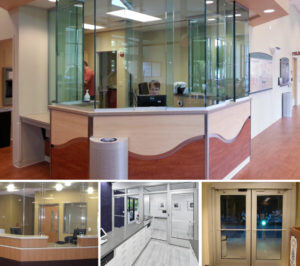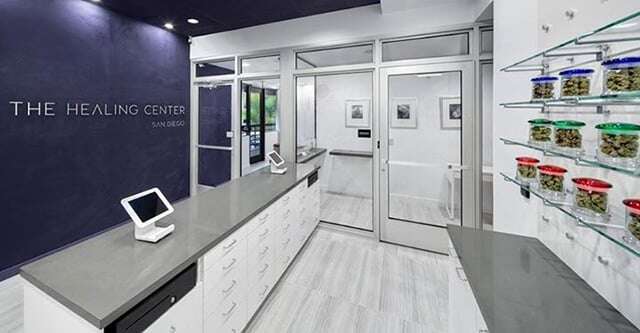Designing physical security for healthcare facilities is a delicate balancing act. Even more so than usual, administrators, workers, and clients are sensitive to the aesthetics, as well as their safety and privacy.
“This is often already a tense situation,” says Total Security Solutions CEO Jim Richards. “People are often nervous if they are going to a clinic, or in a medical crisis. But given the sort of things you see on the news, there’s this whole other layer of being nervous about your personal safety.”
This is why TSS invests so much time in custom designing each system, with a special focus on quick installation and a clean fit and finish.
“Striking the balance between secure and welcoming. That’s what we always emphasize with our systems. We’re trying to create as aesthetically pleasing experience as possible, to help people be at ease. That’s why we go with freestanding systems whenever possible. Clear acrylic. Clear sight lines. No big bulky steel frames. We try and always go for the architectural look, rather than the institutional look.”
The Role of Voice Transmission in Healthcare Security Design
Conversations in a healthcare office—even just at reception—are especially sensitive. But healthcare administrators are often unaware of the wide range of viable solutions a good bulletproofing company can draw from.
“We do everything custom,” Jim explains. “Which means we can approach this in a lot of different ways. There are lots of options, depending on the makeup of the counter and how that reception area is laid out.”
These are predominately “natural voice” solutions, which means that there is no intercom system. Instead, the bullet resistant glass or acrylic sheets are positioned to facilitate voice transmission without leaving a security gap.
“These include baffle windows, arch windows, secure-sound window arrangements. Even the traditional speak hole and backer. Back in the day those relied on a big metal backer, which blocked your ability to see the face of the person you were talking to. It felt really distant. That’s why people always yell into those metal-backed speak holes, even though you don’t have to yell to be heard. We can still do metal backers, if that’s what you need. But we really prefer to do the whole thing in clear acrylic. Then, because we can adjust the size of both the hole and the backer, we can get very clear voice transmission—very clear communication overall—for basically any situation or layout.”
Some healthcare facilities with a lower overall threat profile may even choose to go with a horizontal slider. This style of bullet resistant window can slide open entirely, allowing for totally unobstructed interactions, or be locked down in the case of a security alert.
Physical Security for Healthcare Facilities is “People Dependent”
As Larry Baird (an expert in healthcare security issues) reminds us: “You can have the best security in the world, but it’s people dependent.”
As an example, Baird points to the White House: “Everybody knows that the White House is one of the most secure and guarded residences in the nation. Still, two years ago, a guy not only jumped the fence, but got in the front door of the White House before he was confronted by the Secret Service.”
The fact that this assailant even tried to jump the fence speaks to his shaky mental state. But why did he get so far—not just crossing the three hundred yards between the fence line and the house, but actually gaining entrance to the building?
“Someone forgot to lock the door,” Baird explains. “Someone forgot to lock the door to the White House. You’ve got armed guards, you’ve got dogs, you’ve got a big fence, but the door isn’t locked.”
Jim isn’t surprised to hear this. Budgets have line items for bullet resistant doors and electric strike locks. They have no line item for making sure everyone is explicitly told to check the lock every time they walk past that door.
“Our bullet resistant barrier, it’s just one aspect of people’s physical security measures. When you talk about a ‘security system,’ it covers the whole gamut: training, procedures, protocols, situational awareness, relationships with local law enforcement, the layout of the building, their computer software. Each is a piece of the puzzle. But, jeez, yeah. Check your locks.”


